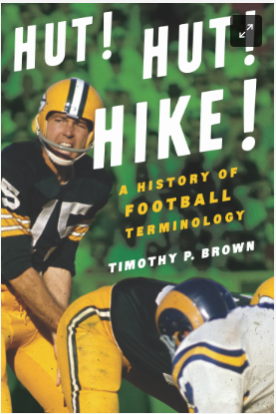The game of baseball has a long and storied history of its players, teams and managers. The stats, the championships, pitching duels and so much more make this one of the most interesting items to study and watch.
Sports History
On This Day in Sports History May 26 - Fueled by Sports
The Fueled by Sports website provides some Sports History for May 26 with gems lioke:
1925 - Detroit Tigers outfielder Ty Cobb became the first major league player to record 1,000 career extra base hits.
2006 - Brandon Webb became the first Arizona Diamondback pitcher to start the season 8-0
2013 - Ranger Jurickson Profar hit a home run in his first career at-bat becoming the youngest player to achieve that in 55 years.
Joe Gordon the New York Yankees Flash at 2nd Base
In the image are members of the New York Yankees 1943 infield, from left to rightː Joe Gordon (second base), Nick Etten (first base), George Stirnweiss (shortstop) and Bill Johnson (third base).
Acrobatic Defense and Clutch Hitting: Gordon's defensive prowess was legendary. His acrobatic fielding earned him nine All-Star selections, and he led the league in assists four times. But his impact was more comprehensive than defense. A powerful hitter, he led the American League in home runs for second basemen seven times, surpassing 20 homers in a season five times. He was a vital cog in the Yankees' "Murderers' Row" lineup, contributing to four World Series titles during his eight years with the team.
Leadership and Sacrifice: Gordon's leadership qualities shone brightly. He served as team captain in 1944 and 1945, leading by example with his work ethic and positive attitude. His impact was even more profound during World War II when he served in the Army Air Corps, missing two prime years of his career. This selfless sacrifice solidified his place as a true hero in the eyes of fans and teammates alike.
Beyond the Pinstripes: In 1947, Gordon was traded to the Cleveland Indians, a move that surprised many. He continued to excel, leading the team to a World Series title in 1948 and maintaining his All-Star status. He retired in 1950, leaving behind a legacy of excellence and sportsmanship.
A Hall of Fame Legacy: Though inducted into the Hall of Fame in 2009, 31 years after his death, Gordon's impact on the game never wavered. He redefined the second base position, showcasing its offensive and defensive potential.
The Duke Takes Another Bite At the Big Apple
The Mets brought the aging star back to New York, purchasing Duke Snider from the Dodgers for $40,000. A Franchise in Search of Stardom: The 1962 Mets were a team brimming with potential but lacking star power. They sought a player who could not only bolster their offense but also attract fans to the newly built Shea Stadium. Duke Snider, a seven-time All-Star and a key member of the Brooklyn Dodgers' World Series victory in 1955, seemed like the perfect fit. His power hitting and name recognition resonated with fans who still mourned the Dodgers' departure to Los Angeles.
While Snider brought experience and a legendary swing to the Mets, his best years were behind him. At 35 years old, injuries and a decline in production had diminished his once-feared bat. Despite flashes of brilliance, Snider struggled to adapt to the pressure of being the Mets' marquee player. His .240 batting average and 14 home runs fell short of expectations, leaving fans yearning for the dominance he displayed with the Dodgers.
A Learning Experience and a Stepping Stone
Though Snider's on-field performance wasn't a resounding success, his presence wasn't without value. He provided leadership for a young Mets team, mentoring future stars like Tommie Agee and contributing to the team's positive clubhouse atmosphere. More importantly, the Snider signing served as a valuable lesson for the young franchise. It highlighted the importance of acquiring players on the rise rather than relying solely on past glories.
Looking Back
The Duke Snider signing serves as a reminder that even the most well-intentioned moves in baseball don't always pan out. However, the experience provided valuable lessons for the Mets, paving the way for their future success. The team's eventual championship in 1969 would be built not on aging stars, but on a core of young, talented players hungry for glory.
Roger Bresnahan
Joe Kelley - MLB 1800s Top Player
Early Career and Rise to Stardom:
Kelley's athletic journey began in 1891 with the Boston Beaneaters. He quickly established himself as a valuable asset with his speed and batting prowess. His exceptional skills earned him the nickname "Kingpin" during his stint with the Baltimore Orioles from 1892 to 1898.
Dominant Years:
From 1894 to 1898, Kelley emerged as one of the most productive players in baseball. He drove in at least 100 runs in each season, amassing a total of 573 RBIs during that stretch. This impressive feat placed him second only to Hugh Duffy in terms of RBIs during that period.
Versatility and Leadership:
Kelley's versatility extended beyond hitting. He showcased his fielding skills as a left fielder and even served as a player-manager for the Cincinnati Reds from 1902 to 1905. In his managerial role, he led the Reds to a third-place finish in 1904, demonstrating his leadership abilities.
Continued Success:
Despite a slight decline in production towards the end of his career, Kelley remained a valuable contributor to his teams. He played for various teams, including the Brooklyn Superbas and the Baltimore Orioles (AL), until his retirement in 1908.
Legacy and Recognition:
Joe Kelley's impact on baseball is undeniable. He finished his career with a respectable .317 batting average and 443 stolen bases. His exceptional performance earned him a well-deserved spot in the Baseball Hall of Fame in 1971.
Joe Gordon
Born February 18, 1915, in Los Angeles, CA, was Baseball Hall of Fame second baseman Joe Gordon. Gordon wore the Number 6 on the New York Yankees (1938,-46) for 7 seasons, nd a few more years on the Cleveland Indians Roster wearing Number 4, as he batted 0.268 for his career, had an On Base percentage of 0.466, with 253 career Home Runs, and Gold Glove Awarded Seasons. Joe is one of the top MLB Jersey Number 6s of All-Time.
Clark Griffith
Jacob Ruppert NY Yankees HOF Executive
Sam Rice From Pitcher to Hall of Fame Hitter
From Mound to Outfield: Drafted in 1915, Rice began his career with the Washington Senators as a relief pitcher. However, after limited success, he transitioned to the outfield in 1916. This shift proved pivotal, unlocking his batting talent.
A Hitting Machine: By 1917, Rice established himself as a regular, batting .302. Over the next two decades, he became a consistent force, averaging over .300 in all but five seasons. He achieved six seasons with over 200 hits, showcasing his remarkable consistency.
A Legacy Beyond Numbers: Rice wasn't just a prolific hitter; he possessed exceptional patience at the plate, ranking among the top ten all-time in walks. This intelligence and discipline contributed to his impressive career batting average of .322.
Washington Icon: Rice spent 19 of his 20 seasons with the Washington Senators, becoming a franchise legend. He holds the team's records for hits, doubles, triples, and runs scored. His dedication to the team earned him the respect and adoration of fans, solidifying his place as a Washington sports icon.
More Than Wins: Beyond his individual achievements, Rice played a crucial role in the Senators' three World Series appearances, including their 1924 championship victory. His clutch hitting and leadership were instrumental in these postseason runs.
Late-Career Brilliance: Even at the tail end of his career, Rice defied expectations. At 40 years old, he became the oldest player to reach 200 hits in a season, a record that stood for decades. This dedication and longevity further cemented his status as a remarkable athlete.
Hall of Fame Recognition: In 1963, Rice received his long-awaited induction into the Baseball Hall of Fame, a testament to his enduring impact on the game. His story inspires us to believe in hard work, consistency, and the potential for greatness, even when you don't fit the typical mold.
Harry Hooper
He is the all-time career leader in assists by a right fielder. During several seasons with Boston, he teamed up with Duffy Lewis and Tris Speaker to form the Golden Outfield, one of the best outfield trios in baseball history.
February 7 Jersey Numbers

Here are some jersey numbers in team sport history that stuck out. February 7, 1949 - Number 5, Joe DiMaggio became the first ball player to earn $100,000 a yearas he did so under contract with the New York Yankees . February 7, 1958 - The Brooklyn Dodgers official...
- The use of a "banner" counts as 10 words!
February 6 Jersey Numbers
Sports history is made every day of the year. We will preserve at least a small sampling from some great athletes every day based on the uniform number they wore. 31 - 9 - 14 - 83 - 7 - 16 - 22 - 80 - 11 - 84 - 10 - 83 - 12 February 6, 1926 - St Louis Browns acquire catcher Wally Schang from ...
February 5 Jersey Numbers

Here is what happened in Sports Jersey History on February 5: Kareem hits a new NBA high, Hines hauls in a big one and Bob Douglas is honored. Our Sports Jersey Take of the Day is from historian Joe Ziemba. Listen in to learn more about sports history along with me from the unif...
- The use of a "banner" counts as 10 words!
The Oregon Agricultural Hard Court Stars
(image) Members of the 1922 Oregon Agricultural College men's basketball team. From left to rightː Gill (forward), Hjeite (enter), and Feraley (forward), from February 5, 1922. This image is courtesy of Wikimedia Commons. We know the OAC by a different name today, Oregon State. The Oregon Ag...
The 1897 Strathcona Hockey Team
.jpg?https://jerseydispatch.com/pfeL/p/c312642c0431e75b485e432232c99c1c/website/Sports-History-Photo-of-the-Day/February-Images/February-4-Image/images/.Strathconas_First_Hockey_Team_(21879505322).jpg)
Formal portrait of Strathcona's First Hockey Team (1897). Stratchcona resides in British Columbian Province, and is the oldest residential neighbourhood of Vancouver, (image) Some players are labeled by number. 1. Bob Blain 2. Jim Blain 3. Billy Sharkles 4. Fred Richards 5. J. McIn...
- The use of a "banner" counts as 10 words!
February 4 Jersey Numbers

Here is what happened in Sports Jersey History on February 4 : We talk about the great goaltending of Grant Fuhr and Ray Durbin of Row One Brand stops by to to discuss two of his favorite number 40s. Listen in to learn more about sports history along with me from the uniforms and jers...
- The use of a "banner" counts as 10 words!






